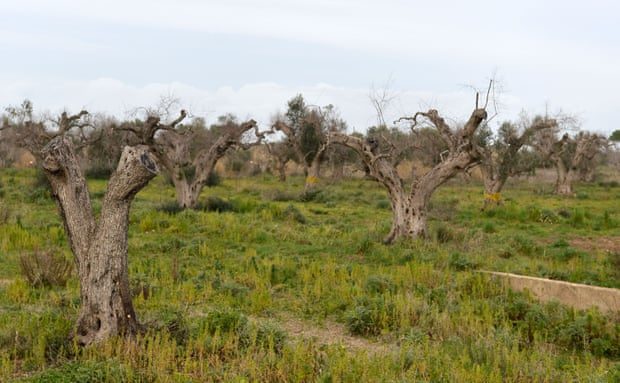
© Tiziana Fabi/AFP/Getty ImagesOlive trees in Italy infected by the xylella fastidiosa bacterium.
Extreme weather blamed for plunge in country's olive harvest - the worst in 25 years - that could leave the country dependent on imports by AprilExtreme weather events have been the "main driver" of an olive harvest collapse that could leave Italy dependent on imports from April, a leading climate scientist has warned.
A 57% plunge in the country's olive harvest - the worst in 25 years - sparked protests by thousands of Italian farmers wearing
gilet arancioni - orange vests - in Rome earlier this month.
Olive trees across the Mediterranean have been hit by freak events that mirror climate change predictions - erratic rainfalls, early spring frosts, strong winds and summer droughts.
Prof Riccardo Valentini, a director of the Euro-Mediterranean Center for climate change, said: "There are clear observational patterns that point to these types of weather extremes as the main drivers of [lower] food productivity."
He added: "Freezing temperatures in the Mediterranean are anomalous for us. In any direction the extremes are important and indeed, they are predicted by climate change scenarios."
Several reports by the UN intergovernmental panel on climate change (IPCC) "all point to these climatic extremes as one of the major impacts of climate change", he said. "We know there will be more extremes and anomalies in the future."
Comment: Crop and cattle losses are on the rise everywhere, whether it is due to extensive drought, massive hail, epic flooding, unexpected frosts, and even epidemics. See also: